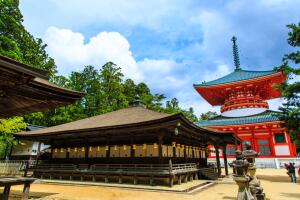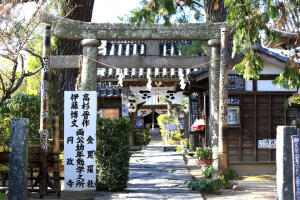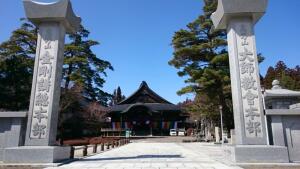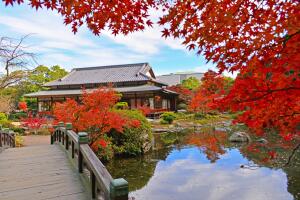Search
Showing 10 of 2208 results

Garan, the heart of Koyasan, is a sacred temple complex founded by Kobo Daishi, the founder of Shingon Buddhism. Explore its majestic Kondo Hall, the striking Konpon Daito Pagoda, and its rich history.
View details →
Enseiji Temple, a unique site where a temple and shrine coexist, offers a glimpse into Japan’s rich religious history. Explore the grounds, see a large earthquake-resistant lantern, and learn about Ito Hirobumi’s childhood.
View details →
Daishoin Temple, built in 1656, was the Mori Clan’s family temple. Explore its Zen garden, visit the burial site of Mori lords, and enjoy a peaceful atmosphere with hundreds of stone lanterns.
View details →
Daishi Kyokai, the heart of Shingon Buddhism, preserves the teachings of Kobo Daishi. Visitors can participate in ceremonies like jukai (Buddhist precepts) and shakyo (sutra copying) for a peaceful, meditative experience.
View details →
Daimon Gate in Koyasan impresses with its towering structure, Edo-period guardian statues, and breathtaking sunset views. A must-see, especially when beautifully lit up at night.
View details →
The Chofu Mori Residence, completed in 1903, offers a unique glimpse into Japan's transition to the Meiji period. Explore the room where Emperor Meiji stayed and enjoy the beautiful gardens and architecture.
View details →
Chofu Garden, once the residence of a high-ranking official, offers a serene pond, elegant buildings, and stunning seasonal blooms. Stroll through this peaceful gem and enjoy Japan’s rich natural beauty.
View details →
Battle Monuments in Mimosusogawa Park honor Japan's rich history with two unique monuments: Choshu cannons and statues of Minamoto and Taira clan leaders. Enjoy views of the Kanmon Bridge while exploring.
View details →
Akama Shrine, located in Shimonoseki with stunning views of the Kanmon Strait, honors Emperor Antoku. Visit to experience its peaceful atmosphere, striking Suitenmon gate, and rich historical significance.
View details →
Aiba Waterway, a historic canal in Hagi, dates back to the 18th century. Once used for transporting goods, it’s now a serene spot with colorful koi. Stroll along and explore the city’s cultural heritage.
View details →